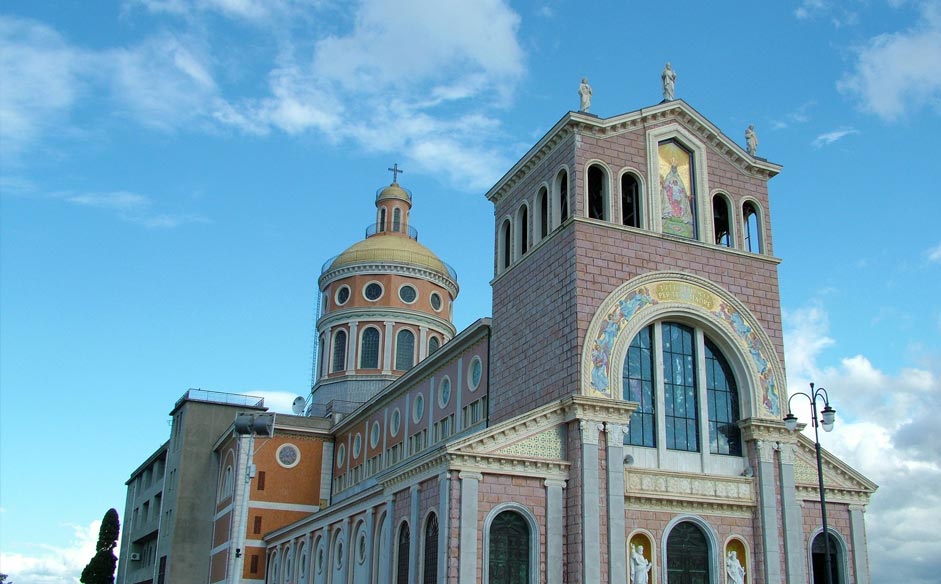The ancient Sanctuary has a limited capacity, therefore in the past it was not able to contain the crowds of pilgrims devoted to the Black Madonna. It was built on the ruins of the first Sanctuary, and contains various testimonies of the past. Some reports report various information about the raids that the Arabs followed. In this documentation, however, it appears that, among the very few houses saved, there was also the church. Subsequently, the Sanctuary of Tindari was enlarged, and rooms were annexed for the accommodation of worship personnel.
The key element of the entrance portal is carved in the year 1598, perhaps the year in which it was completed. This place has undergone, through these four centuries of life, various restorations, but has substantially preserved its peculiar beauty. In 1953, the existing shrine had become incapable of welcoming pilgrims. Some projects had been devised, but without offering a concrete solution. Monsignor Pullano identified a remedy for this complication: he prepared the rock excavation and demolished some rooms, but left the old church intact.
The magnificent Sanctuary of Tindari has, as is known, a very particular statue of the Virgin Mary. The origins of the Byzantine statue of the Black Madonna are linked to an interesting legend. The sculpture, transported by sea, prevented the ship from starting again after it had found refuge in the bay, to escape a violent storm. The statue had left the East to escape the iconoclastic persecution.
The sailors deposited the cargo on the ground, and only when they brought the statue there, could the ship resume the sea. This was then carried on the hill above, inside the Sanctuary of Tindari, in fact. The Madonna is black, and has an elongated face, not easily found in other religious statues. Its uniqueness is certainly worth a trip to Tindari, to fully enjoy the beauty of the art that dwells there!





